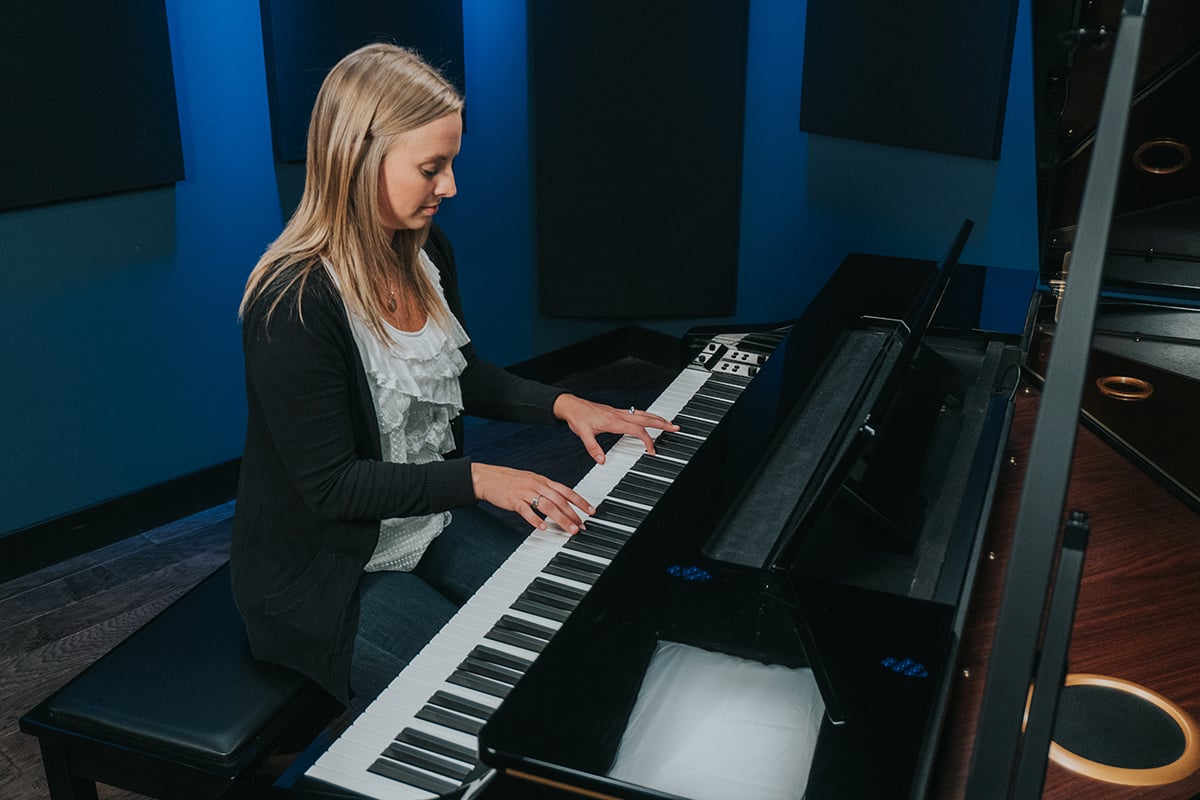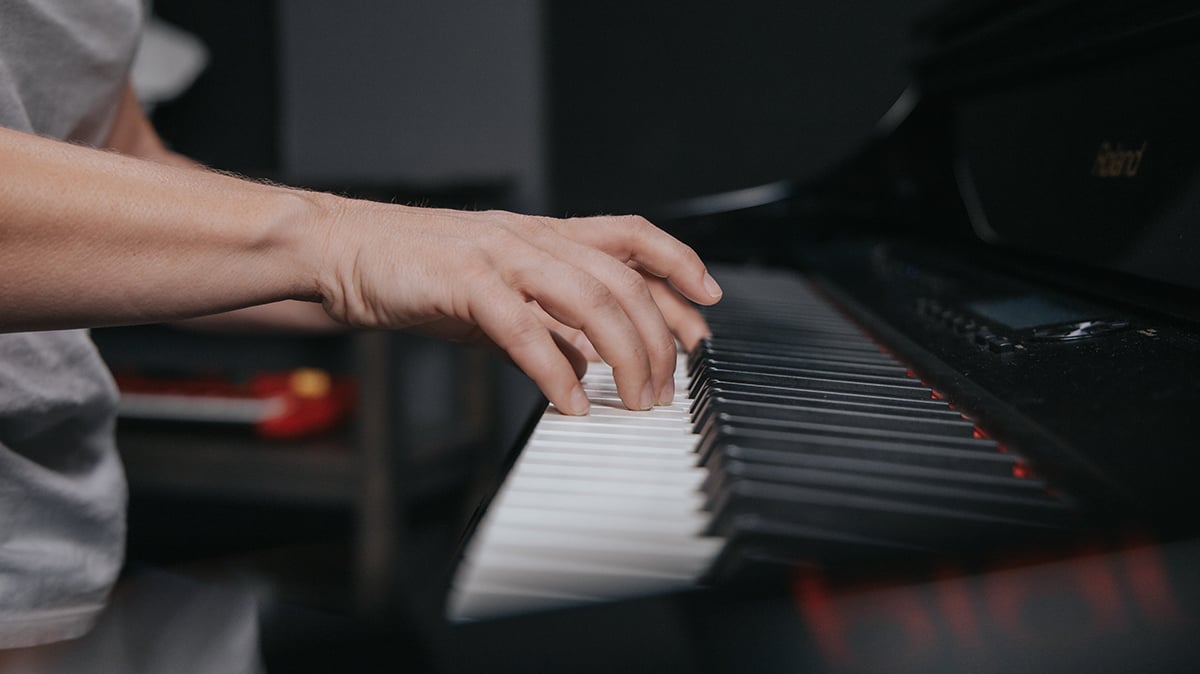Finger tension can be a real problem for many pianists.
You might have experienced it yourself. You’re practicing, and suddenly your fingers ache. It’s not good.
Finger tension can be caused by a variety of factors. Some of the most common causes are playing the piano too fast and trying to play chords and intervals that are too much of a stretch.
That’s why it is so important to progress in the correct way. It’s why I say time and time again that the best way to play fast is to start slow. We need to build up the strength, dexterity, and accuracy in our fingers, and also make sure we don’t cause injury.
Cassi has four exercises that will not only help you remove finger tension, but they will help your fingers get stronger and help you play faster. And the best thing is that you can practice some of these away from the piano!
This is something you can do anywhere. If you’re at the piano you can use the fallboard. If your piano doesn’t have one, then a desk is fine.
All you have to do is balance your hands on each finger, hands together. This is getting us used to curving our fingers and using the tips of our fingers to be the contact point with the piano.
Go slowly, and pay attention to finger 4 (the ring finger). This is often a weaker finger.

Technique is the foundation to piano playing. If technique has been holding you back from playing the songs you love, check out Piano Technique Made Easy with Cassi Falk. This course, free with your Pianote membership, will take you through all 12 major and minor keys as you master scales, arpeggios, chords, and more.
Now we are going to do the exact same exercise, but playing the piano. Start on a note (middle C is always good) and then play a slow contrary motion five-finger scale.
Remember to balance on the tips and keep the pressure on each finger even. Don’t rush this — it’s not about speed just yet. This is about strength and control. Speed comes next.
Pick a scale that you are comfortable with. In the example, Cassi is using the D major scale, but you can pick anyone you like.
We’ll start by playing only the first FOUR notes of the scale. So we will have to tuck our thumb but only play the four notes.
We are going to work on playing a bit faster, by adding a note as we go along. So once you are comfortable playing the first four notes (The Addams Family Theme) then add the fifth note. Then the sixth, then the seventh, up until we’re playing the full octave.

Everyone wants to play fast.
Being a speed demon on the piano dazzles and impresses. And it’s really fun! But while playing fast can look difficult, it’s absolutely doable if you know the right techniques and exercises. Introducing: Faster Fingers, a 30-lesson course pack to get you there. Free with your Pianote membership!
Up until now, we have really only focused on the right hand for speed. But often we’ll want to play fast patterns with our left hand. A common one is arpeggios or broken triads. Playing the three notes of a triad quickly can really tire out the fingers. So we need to find a way to help.
That’s where the wrist comes in. By using our wrist we can take a lot of the strain off of the fingers, allowing us to play faster, and longer.
To do this we need to create little circles with our wrist, behind the fingers. This engages our forearm and allows our fingers to be in a better position to play the notes. As we get faster the circles will get smaller.
Cassi ends the lesson with three fantastic takeaways.
So I hope you’ll try these out and find them useful!
Happy Practicing!
Lisa Witt has been teaching piano for more than 20 years and in that time has helped hundreds of students learn to play the songs they love. Lisa received classical piano training through the Royal Conservatory of Music, but she has since embraced popular music and playing by ear in order to accompany herself and others. Learn more about Lisa.
/marketing/pianote/promos/april/banner-bg-m.webp)
We use cookies for traffic data and advertising. Cookie Policy »
/marketing/pianote/promos/april/banner-title.webp)